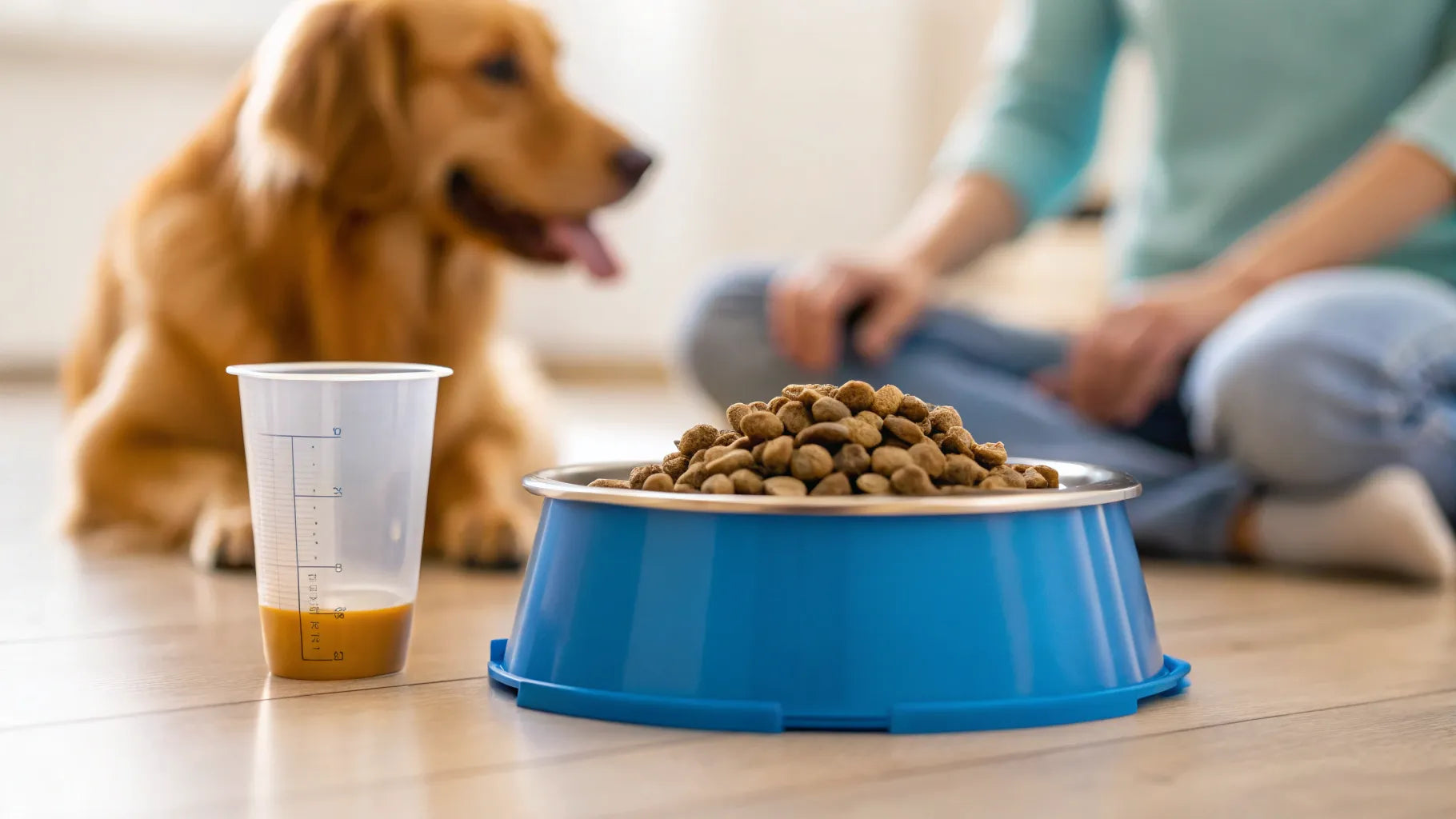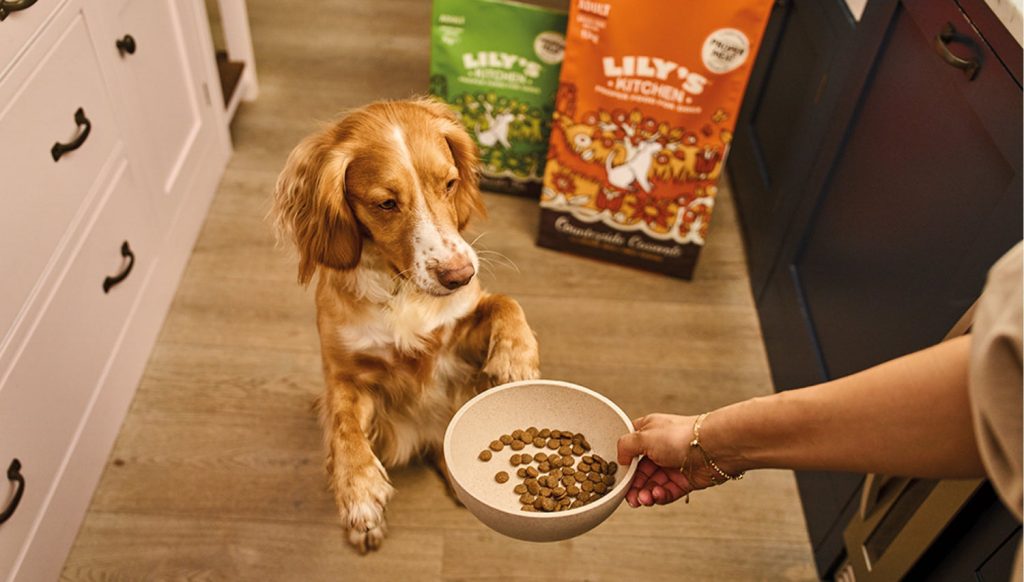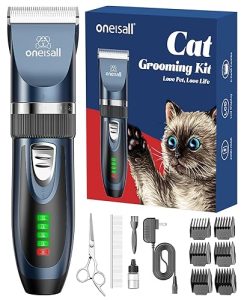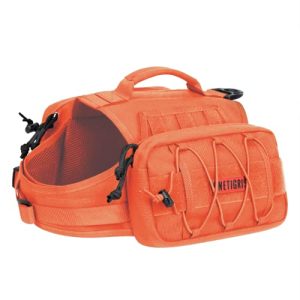Training your dog to eat kibble might sound simple, but for many pet owners, it can be a real challenge. You want your furry friend to enjoy mealtime without fuss, and you want to feel confident that they’re getting the right nutrition.
If your dog turns up their nose at kibble or seems uninterested, you’re not alone. The good news is that with the right approach, you can make kibble a favorite part of your dog’s day. Keep reading to discover easy, effective steps that will help your dog eat kibble happily and healthily—no stress, no struggle.

Credit: www.houndsy.com
Choosing The Right Kibble
Choosing the right kibble for your dog is essential. It affects their health and happiness. Selecting the best kibble can be overwhelming. Many options exist on the market. Understanding different types and ingredients helps you decide.
Types Of Kibble
Kibble comes in various forms. Some are dry, while others are semi-moist. Dry kibble is most common. It’s economical and easy to store. Semi-moist kibble has higher water content. It can be tastier for picky eaters.
Both types have pros and cons. Consider your dog’s preferences and needs. Observe how your dog reacts to each type. This helps you make an informed choice.
Ingredients To Look For
Ingredients matter in kibble selection. Quality protein should be the first ingredient. Look for chicken, beef, or fish. Avoid kibble with fillers like corn or soy. These add little nutritional value.
Check for essential vitamins and minerals. Omega fatty acids are good for skin and coat. Antioxidants support overall health. Always read labels carefully. Ensure the kibble meets your dog’s dietary needs.
Matching Kibble To Your Dog’s Needs
Every dog is unique. Age, size, and activity level influence kibble choice. Puppies need more calories and nutrients. Senior dogs may need specialized formulas.
Active dogs require higher energy kibble. Less active dogs benefit from weight-control formulas. Consult with your vet for personalized advice. They can guide you to the best kibble for your pet.

Credit: www.youtube.com
Preparing Your Dog For The Switch
Switching your dog to kibble can feel like a big change—for both of you. Dogs are creatures of habit, and a sudden switch might cause them to reject the new food. Preparing your dog properly helps make the transition smoother and keeps mealtime enjoyable.
Gradual Introduction
Start by offering small amounts of kibble alongside your dog’s current food. This helps your dog get used to the smell and taste without overwhelming them. Watch how your dog reacts—if they seem hesitant, slow down the transition.
Keep the pace steady over several days or even weeks. This gradual approach reduces the chance of digestive upset. Have you noticed your dog’s preferences changing after a few tries? That feedback is valuable.
Mixing Kibble With Current Food
Mix the kibble into your dog’s usual meals rather than replacing it outright. Begin with a ratio like 25% kibble to 75% current food. Each day, increase the kibble amount while decreasing the old food.
- Day 1-3: 25% kibble, 75% current food
- Day 4-6: 50% kibble, 50% current food
- Day 7-9: 75% kibble, 25% current food
- Day 10+: 100% kibble
This slow mix lets your dog’s palate and stomach adjust. If your dog refuses the mix, try warming it slightly to enhance aroma or adding a small bit of broth for extra appeal.
Timing And Portion Control
Stick to regular feeding times to build a routine around the new food. Avoid free feeding, which can make it harder for your dog to accept kibble. Instead, offer meals for about 15–20 minutes, then remove any leftovers.
Portion control helps you monitor how much your dog eats and prevents overeating. It also lets you notice any changes in appetite or digestion quickly. Have you tried adjusting meal times to better fit your dog’s natural hunger cues?
Encouraging Your Dog To Eat Kibble
Encouraging your dog to eat kibble can be a smooth process with patience and care. Dogs may resist kibble due to taste, texture, or habit. Creating a positive experience around meal times helps your dog adapt easily. Small steps and consistency will build good eating habits.
Creating A Comfortable Feeding Environment
Choose a quiet spot for feeding. Avoid noisy or busy areas where your dog feels distracted. Use a clean bowl and place it in the same location every day. Keep the feeding area free from other pets during meal times. Comfort helps your dog focus on eating without stress.
Using Positive Reinforcement
Praise your dog when it tries the kibble. Use gentle words and petting to show approval. Reward small progress with treats or favorite toys. Avoid forcing your dog to eat. Encouragement builds trust and makes kibble more appealing. Celebrate each successful bite to motivate your dog.
Avoiding Common Mistakes
Do not mix too many different foods at once. Sudden changes can confuse your dog’s taste buds. Avoid giving table scraps or snacks right before meals. This reduces hunger and interest in kibble. Never punish your dog for not eating. Negative reactions create fear around food.
Handling Refusal And Picky Eating
Handling refusal and picky eating can be one of the most frustrating parts of training your dog to eat kibble. It’s important to stay patient and observe your dog’s behavior closely to understand what might be causing this resistance. Often, the solution lies in subtle changes you can make to their feeding routine or environment.
Identifying Reasons For Refusal
Before you try to fix the problem, figure out why your dog refuses kibble. Sometimes, it’s simple: the dog might be full from treats or other food. Other times, the kibble might not appeal due to smell or texture.
Health issues can also play a role. Dental pain, upset stomach, or allergies might make your dog avoid eating. Watch for other signs like lethargy or vomiting that suggest a medical problem.
Tips To Increase Appetite
- Warm the Kibble:Slightly warming the food can enhance its aroma, making it more enticing.
- Add Tasty Toppers:Mix in a little bit of plain cooked chicken or low-sodium broth to boost flavor without overfeeding.
- Stick to a Schedule:Offer food at the same times each day and remove it after 15-20 minutes to encourage eating during mealtime.
- Limit Treats:Cut back on snacks between meals to increase hunger at feeding times.
- Change the Bowl:Sometimes using a different type of bowl can make a difference — try a shallow or ceramic dish.
When To Consult A Veterinarian
If your dog consistently refuses kibble and shows other symptoms like weight loss, vomiting, or changes in behavior, don’t wait to get professional advice. A vet can rule out health problems that might cause loss of appetite.
Persistent picky eating may also indicate allergies or digestive issues. Getting a clear diagnosis will help you choose the right food and treatment plan for your dog’s specific needs.
Maintaining Healthy Eating Habits
Maintaining healthy eating habits is key to your dog’s well-being. It helps keep their energy steady and digestion smooth. Good habits also prevent overeating and obesity. Consistency builds trust and makes mealtime easier for your dog.
Consistent Feeding Schedule
Feed your dog at the same times daily. Regular meals help regulate digestion and metabolism. Avoid leaving kibble out all day. Scheduled feeding encourages your dog to eat their food promptly. Stick to two or three meals a day based on your dog’s age and size.
Monitoring Your Dog’s Health
Watch for changes in appetite or weight. A sudden loss or gain may signal health issues. Check your dog’s stool for signs of good digestion. Regular vet visits keep your dog’s health on track. Healthy eating habits support a strong immune system and shiny coat.
Adjusting Portions As Needed
Portion sizes depend on your dog’s weight, age, and activity level. Increase or decrease food amounts to maintain a healthy weight. Use the feeding guidelines on the kibble package as a start. Observe your dog’s body condition and energy to guide portion changes. Avoid overfeeding to reduce the risk of obesity.

Credit: sitmeanssit.com
Frequently Asked Questions
How Long Does It Take To Train A Dog To Eat Kibble?
Training usually takes 1 to 2 weeks with consistent feeding times. Gradually mix kibble with familiar food to ease the transition. Patience and positive reinforcement speed up the process.
What Are The Best Tips To Switch Dogs To Kibble?
Introduce kibble slowly by mixing it with wet food. Increase kibble gradually over several days. Ensure fresh water is always available. Use praise and treats to encourage eating kibble.
Can Puppies Eat The Same Kibble As Adult Dogs?
Puppies need specially formulated kibble with extra nutrients. Adult dog kibble lacks necessary calories and vitamins for growth. Always choose age-appropriate kibble to support your dog’s health.
How To Encourage A Picky Dog To Eat Kibble?
Add warm water or broth to soften kibble and enhance flavor. Offer kibble in a quiet, comfortable place. Avoid feeding table scraps to reduce pickiness. Reward your dog when they eat kibble.
Conclusion
Training your dog to eat kibble takes time and patience. Start slow and be consistent every day. Praise your dog for trying new food. Mix kibble with wet food to help with taste. Watch your dog’s reactions and adjust as needed.
Remember, each dog learns at its own pace. Keep mealtime positive and stress-free. Soon, your dog will enjoy eating kibble happily. Simple steps lead to good habits. Healthy eating starts with your care and effort.

Emily Barker is the founder of ChillDogLife.com, a space dedicated to helping pup parents discover the best dog products, lifestyle tips, and cozy ideas for happier homes.
A lifelong dog lover, Emily combines her passion for pets with a knack for research to share trusted recommendations on everything from toys and furniture to health and everyday care.
Her goal is simple: to make life easier, stylish, and more joyful for dogs and the people who love them.







